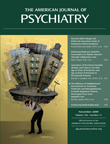The search for a pharmacologic treatment for cocaine dependence has been long and arduous. Hundreds of studies have been conducted, yet there are no FDA-approved therapeutic agents for the treatment of cocaine dependence to date. The article by Brodie and colleagues in this issue of the
Journal reports the results of a randomized, placebo-controlled trial of vigabatrin (γ-vinyl gamma-aminobutyric acid [GABA]) in the treatment of cocaine dependence in Mexican parolees
(1) . This study is noteworthy for several reasons. Vigabatrin is an irreversible inhibitor of GABA transaminase, the primary enzyme involved in GABA metabolism. Acute administration of vigabatrin increases brain GABA levels, and these increases in GABA-ergic transmission have an inhibitory effect on dopaminergic transmission and centrally mediated reward systems. In particular, animal models of both cocaine and alcohol dependence have demonstrated significant decreases in consumption of both substances after administration of vigabatrin at doses that did not impact motor activity, suggesting potential use as a therapeutic agent for cocaine or alcohol use disorders
(2,
3) . While changes in GABA with chronic use of a number of substances of abuse are well established, this is the first successful demonstration of a therapeutic application that clearly builds on the GABA-dopamine relationship in cocaine dependence. This study is an excellent example of translational science in which a hypothesis-driven exploration of a therapeutic agent, based on mechanism of action, led to robust findings in animal studies followed by pilot studies in humans
(4) and finally a small controlled clinical trial. This is an important exploration of an agent with a novel mechanism of action in cocaine dependence, a disorder that is a substantial public health problem without good pharmacotherapeutic treatments available. Of particular interest, although the primary outcome was cocaine dependence, vigabatrin appeared to impact both alcohol and marijuana use. This is consistent with the studies indicating that vigabatrin decreases alcohol consumption in animal models and certainly warrants further exploration in clinical trials. While the results are not tremendously robust, with only 28% of participants in the vigabatrin group with verified full abstinence at the end of the trial and 34% with partial abstinence, this is still a reasonable “signal” for a small medication trial in a very difficult-to-treat population.
This trial brings up several ethical issues. Vigabatrin was introduced in the mid-1980s as an effective and well-tolerated anticonvulsant agent
(5) . In 1997, severe visual restriction was reported in association with vigabatrin, and its place in the management of epilepsy became limited
(6) . Most recent estimates of the prevalence of visual field defects in patients treated with vigabatrin range from 30% to 50%
(7,
8) . In the United States, the use of vigabatrin is restricted to treatment-refractory partial seizure disorders in adults and infantile spasm of sufficient severity that benefits are determined to outweigh the potential risk of vision loss. However, visual field deficits have been reported only with chronic use of vigabatrin (i.e., more than 12 months). While both cocaine and alcohol dependence are chronic and relapsing disorders, it is likely that a shorter duration of treatment can be helpful in facilitating long-term abstinence. Fechtner and colleagues
(9) found no evidence of ocular or visual field adverse effects with short-term vigabatrin use (9 weeks) in a small group (N=18) of cocaine- and methamphetamine-dependent individuals. However, the question of visual field defects with even short-term use of vigabatrin remains open. Furthermore, if further trials demonstrate efficacy and the use of vigabatrin becomes more widespread, it is likely that it will be used for longer periods of time in larger numbers of patients, making the possibility of visual field defects in some individuals likely. Can the benefits of the treatment of cocaine and alcohol dependence ever outweigh the risk of vision loss? It must be remembered that these are diseases that threaten and ruin the lives of those affected and their loved ones. While every precaution must be taken to minimize the risks and further investigation of visual field defects is warranted, serious diseases warrant aggressive treatment.
The fact that the investigation was undertaken with a group of Mexican parolees, rather than the usual U.S. patient volunteers, might also give one pause. As is required for publication in the
Journal, all appropriate protections were in place to prevent coerced participation and the authors fully describe the patient population, treatment setting, and informed consent procedures. The investigators state that this population was selected because cocaine use is endemic in prisons in Mexico and is considered to be one of the main causes of recidivism in parolees. In this case, the Mexican authorities welcomed the study because of their frustration with current treatment. As was articulated in a recent editorial in the
Journal regarding ethical considerations in a randomized study of foster care versus institutionalized care in Romania, research “should be evaluated ethically within the local context in which the research is conducted”
(10) . All subjects received physical exams, including visual field examination, and were engaged in psychosocial treatment throughout the time of study participation. Prison and parolee populations can be difficult to work with because of ethical and regulatory issues, but this is a very treatment-resistant real-world population and we need to know more about effective treatments. The authors are to be commended for taking on the difficult task of conducting a well-designed, ethically sound clinical trial in this patient population.

